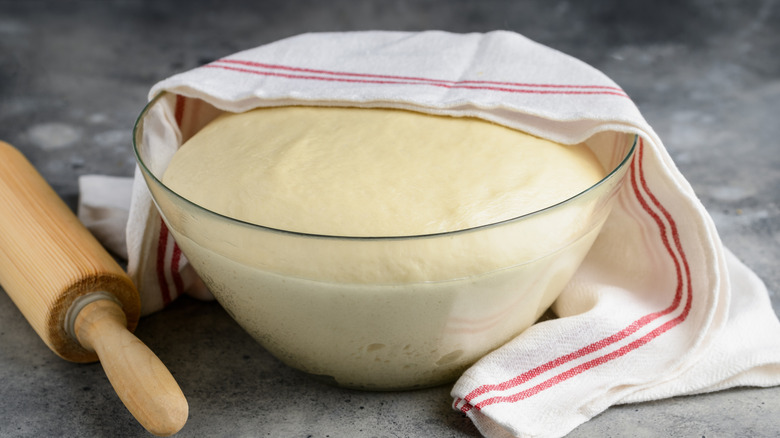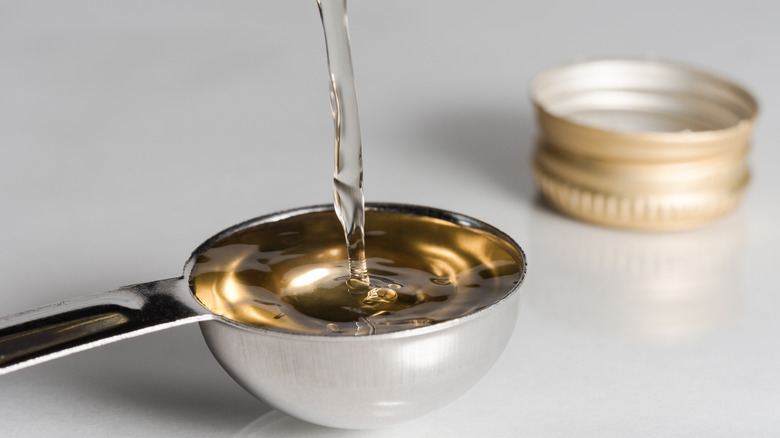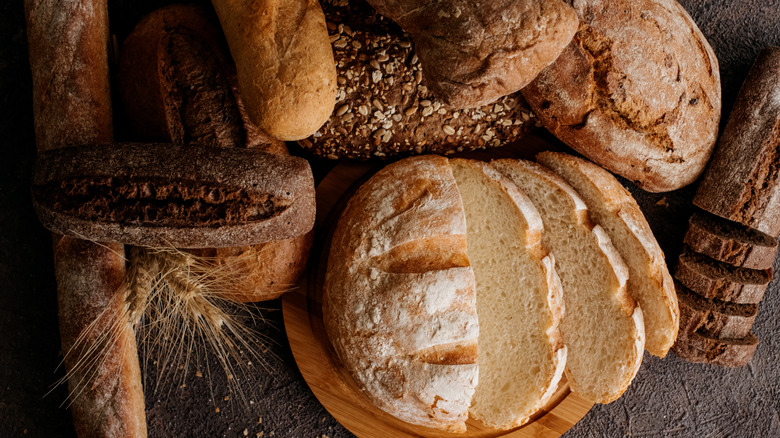Why You Should Start Adding Vinegar To Your Bread Dough
Those who have embarked on a journey into breadmaking will know that it can be a frustrating hobby. Bread is a fickle friend — with only a single misstep, you'll be left trying to salvage an undercooked bread interior or lamenting a blackened crust. Bread is the product of a series of complex chemical reactions that must be facilitated correctly, a feat far easier said than done. So home bakers are always on the lookout for that clandestine ingredient or missing step that will solve all their bread problems.
Well, there probably isn't just one ingredient or technique for overall perfection, but to find out how to improve texture, flavor, and even shelf life, Food Republic spoke to Sheena Otto, resident baker of Brooklyn's Park Slope Farmers Market. Her advice was that the secret to bread success could be vinegar.
"Adding vinegar to a dough in small amounts," Otto told Food Republic, "will weaken the gluten structure so that the bread is less chewy and more tender. For comparison, it might be soft like an 'Italian loaf' rather than sturdy like a sourdough loaf." When you add vinegar to dough, it dissolves protein bonds, denaturing the gluten structure, allowing more space for carbon dioxide bubbles, and making the loaf less dense. Vinegar also reacts with baking soda or yeast to produce even more bubbles, which causes the dough to rise further and become fluffy.
Choose your vinegar and measure carefully
For a neutral taste with just a mild tang that won't overwhelm the bread's flavor, you can't go wrong with white distilled vinegar, but you can also try out flavored vinegar. Apple cider vinegar is a little sweet and fruity, and balsamic vinegar is bold and bright. Any vinegar you choose — whether rice wine, Champagne, or even homemade fruit vinegar – will bring its own taste to the loaf, which means that you can have fun with flavor but need to be cognizant of how much you're adding.
Sheena Otto typically sticks to no more than 5% vinegar, but she noted, "I've heard of people going as high as 10%." Those amounts are measured in baker's percentages — where the ratio of the weight of ingredients to the total flour weight is expressed as a percentage — and flour always represents 100%.
So if your recipe calls for 500 grams of flour, and you want your vinegar at 5%, you'd put in about 25 grams of vinegar. If you don't feel like figuring out the math, though, and just want to experiment, you can begin with one teaspoon of vinegar for one loaf. Even with that small of an amount, you'll still see the textural and flavorful results.
Add vinegar to help everything from flavor to shelf life
Not only will there be more bubbles and a greater rise, but the vinegar will also cause the bread to rise faster. When you add the acidic vinegar, the pH of your dough is lowered, which creates a more hospitable environment for the yeast to ferment. That fermentation, a chemical process wherein yeast breaks down carbohydrates to produce carbon dioxide and ethanol, contributes to the bread's light texture and flavor.
Speaking of flavor: A little texture and leavening assistance isn't the only aid that vinegar will offer. Rise is a good enough reason to add vinegar to your recipe, but a lot of bakers also use vinegar for its tangy flavor. "The loaf will have a slightly sharper flavor than a loaf made without vinegar," explained Sheena Otto. "Many bakers use vinegar when they want to use commercial yeast to produce a quicker-rising loaf but want to mimic a sourdough flavor."
And once you have your fluffy, flavorsome loaf, that splash of vinegar is one of many tips to keep your bread fresh for longer. The lower pH that your vinegar helped create may be good for yeast fermentation, but it isn't good for bacterial growth. "The vinegar also acts as a preservative," Otto stated, "delaying the onset of mold in the baked loaf and extending its shelf life."



